A great Pesto Recipe can transform any dish into a culinary masterpiece! I’m excited to share with you my take on the classic recipe, which I acquired during a trip to New Zealand. It’s a game-changer– it’s easy to make and bursting with flavor!
Today, I’m excited to share all of my pesto-making tips and tricks, including how to properly store and use it. With these tips, you’ll be able to make the perfect pesto every time and keep it fresh and delicious for days.
What Is Pesto?
Pesto is a classic Italian sauce made primarily with fresh basil leaves, pine nuts, olive oil, and grated Parmesan cheese. These ingredients work together to create a vibrant and flavorful sauce that’s perfect for adding to pasta, spreading on sandwiches, or using as a dip for veggies.
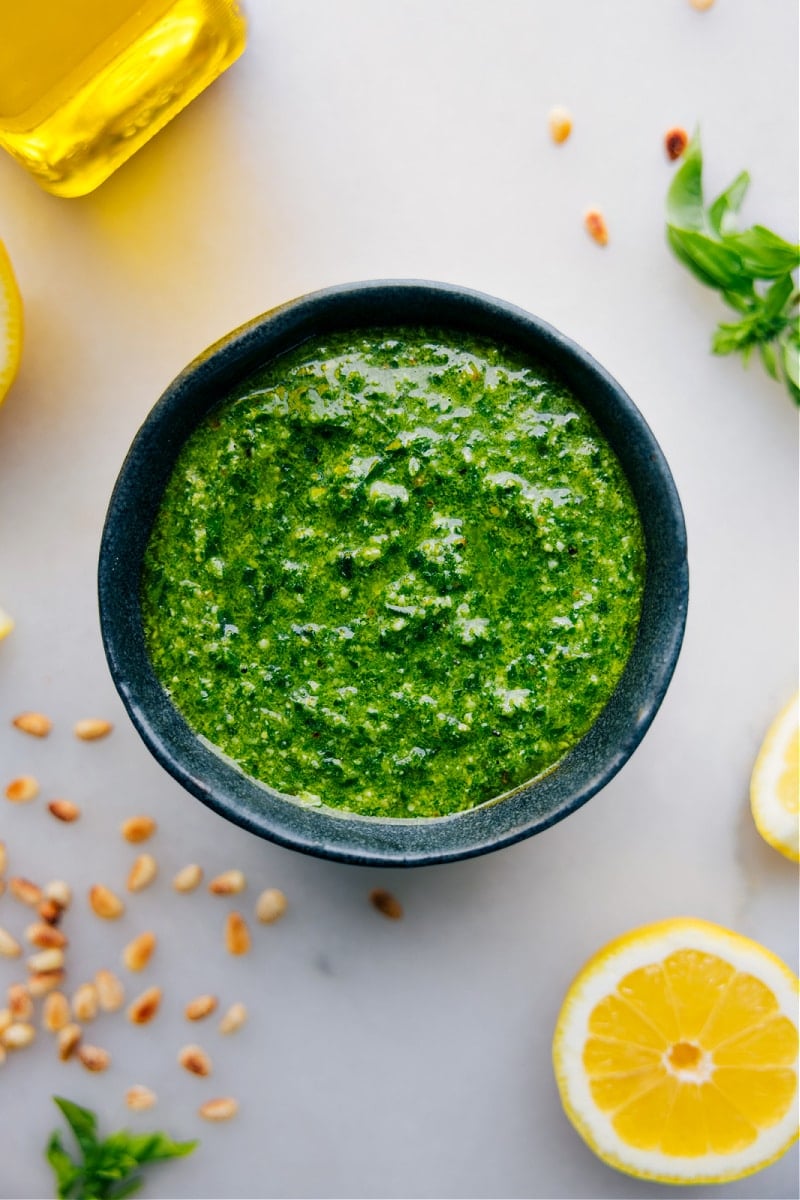
The Best Pesto Recipe — All The Way From New Zealand!
I’m thrilled to share with you today my take on pesto, a sauce that I absolutely adore! If you’ve been following this site for a while, you know that I can’t get enough of it. Pesto not only adds a burst of flavor to any dish, but it can also elevate a simple meal to gourmet status with very little effort. That’s why it’s my go-to ingredient for busy weeknight meals. If I have pesto on hand, I know I can whip up a delicious meal in no time.
While I often recommend buying fresh, refrigerated pesto from a good brand, such as Rana® basil pesto (which I still adore!), I finally decided it was time to share a homemade Pesto Recipe. But over the years, I’ve tried dozens of homemade pesto recipes from various sources, and none of them have fully impressed me.
But then on a recent trip to New Zealand, I tried a pesto-coated appetizer at a restaurant. It was so good that I just had to ask for the recipe. And to my delight, they graciously shared it with me.
I can honestly say that this is the best homemade Pesto Recipe I’ve ever tasted, and it just so happens to also be incredibly easy to make. So, without further ado, let’s dive in!
Pesto Recipe Ingredients
Here’s what we’ve got in this Pesto Recipe:
- Basil leaves: It’s crucial to use fresh basil leaves when making pesto. Basil that’s been sitting in your fridge for too long can quickly turn brown when blended and can affect the flavor and appearance of the sauce.
- Pine nuts: These tiny nuts have a buttery and slightly sweet flavor that pairs perfectly with the other ingredients. Toast the pine nuts before adding them to the pesto for a delicious nuttiness in the sauce.
- Olive oil: High-quality extra-virgin olive oil is a must for pesto, as it provides a smooth and creamy texture and adds the best flavor to the sauce.
- Parmesan cheese: Adds a salty, nutty flavor and a creamy texture to the sauce. Grating the cheese on the small holes and gently packing it in ensures it blends well with the other ingredients.
- Fresh lemon: This adds a nice and welcome acidity and brightness to the sauce.
- Salt and pepper: Brings out the flavors of the other ingredients and adds a bit of seasoning to the sauce. A pinch of fine sea salt and freshly ground black pepper are all that’s needed.
Get The Right Quantity Of Basil
Getting the right amount of basil for your pesto can be a bit of a challenge. Packing it in and attempting to measure it in cups will vary and can result in vastly different amounts of basil. So, my top tip for perfect pesto is to use a food scale.
Using a kitchen scale will take out all the guesswork (plus, it’s easier!) and ensure that you have the right amount of greens for this recipe.
For this Pesto Recipe, you’ll need four ounces (or about 100-110 grams) of fresh basil leaves. If you don’t have a food scale, I recommend purchasing basil from a packet that clearly indicates the ounces or grams. This way, you can be sure you have the right amount of basil and your pesto will turn out perfectly every time.
Variations
Switch Things Up
This Pesto Recipe is a versatile sauce that can be easily adapted to suit your taste preferences or dietary needs. Here are some variations to try:
- Different greens: You can use a variety of greens to make pesto, such as arugula, baby spinach, kale, or flat-leaf Italian parsley. Each green will give the pesto a unique flavor and texture.
- Nut substitutes: Pine nuts can be quite expensive, but you can easily substitute them with other nuts like walnuts, cashews, almonds, or hazelnuts. Each nut will give the pesto a different flavor profile.
- Seed substitutes: If you have a nut allergy or prefer not to use nuts, you can try using seeds like sunflower seeds instead. While they might not give the same depth of flavor as nuts, they will still work well in the recipe. However, it’s important to note that seeds may not work well with kale due to its tough texture.
- Combination pesto: You can also try mixing different greens and nuts/seeds to create a unique flavor combination. For example, try using kale and cashews or arugula and almonds.
Pesto Making Tools
When it comes to making this Pesto Recipe, there are several tools you can use, each with its own advantages and disadvantages. Here’s a breakdown of the most popular pesto-making tools:
- Food processor: A food processor can handle large quantities of ingredients and produce a smooth and consistent texture.
- Blender: Blenders work best when making larger quantities of pesto as smaller amounts typically don’t blend as well. If using a blender, you’ll need to frequently scrape down the sides and mix the ingredients in between pulsing.
- Hand-held immersion blender: A hand-held immersion blender is a great option if you’re making a small batch of pesto. Simply add all the ingredients together in a tall container and use the immersion blender until the pesto reaches your desired consistency. Note that immersion blenders may not produce as smooth a texture as a food processor or blender.
- Spice/nut grinder: If you’re making a small batch of pesto, a spice or nut grinder is a great option. This nut grinder is actually my favorite way to make pesto! I’ll start it all off in a blender or food processor and then transfer the mixture to the nut grinder for a better consistency. If you aren’t happy with the consistency delivered by the other tools, you’ve got to try a good nut grinder!
How To Use This Homemade Pesto Recipe
Here are some ideas on how to use your delicious pesto:
- Toss with pasta: Pesto is perfect for tossing with cooked pasta, creating a quick and easy meal. To make pesto pasta, simply cook your favorite pasta according to the instructions on the package, making sure to reserve some of the pasta cooking water. Once the pasta is cooked, drain it and return it to the pot. Add the pesto sauce to the pot and toss it with the pasta, using the reserved pasta water to loosen the sauce to your desired consistency. You can also add some cherry tomatoes or roasted vegetables for added flavor.
- Spread on toast, wraps, or sandwiches: Use pesto as a spread for avocado toast, sandwiches, or wraps. It pairs well with avocado, tomatoes, and mozzarella cheese.
- Use as a dip: Serve pesto as a dip with fresh vegetables, crackers, or breadsticks. It’s a great alternative to traditional dips like hummus or salsa.
- Top off grilled meat or fish: Use pesto as a topping for grilled chicken, fish, or steak. It adds a burst of flavor and a pop of color to your dish.
- Mix into soups: Add a spoonful of pesto to your favorite soup to add some depth of flavor. It works particularly well with tomato soup, minestrone, and vegetable soup.
Quick Tip
Browse through our recipe archives for lots of recipes that call for pesto!
Storage
Storing Pesto
To keep your homemade pesto fresh, it’s important to store it correctly. Store it in a super airtight container in the fridge for up to 3 days, or in the freezer for up to 3 months. If you don’t have an airtight container, you can smooth the surface of the pesto and cover it with a thin layer of olive oil to prevent the basil from turning brown due to contact with air.
If you have extra pesto and don’t want it to go to waste, you can freeze it in ice cube trays for future consumption. Simply fill the portions of the ice tray with the prepared pesto, and place the tray into the freezer. Once the cubes are frozen (which should take a few hours), remove them from the tray and place them in a freezer bag. Label the bag with the date, and store it in the freezer for up to 3 months.
When it’s time to use your frozen pesto, simply remove as many cubes as you need and let them thaw in the fridge overnight. You can also add the frozen pesto cubes directly to hot pasta, soups, or sauces and let them thaw and melt into the dish adding loads of flavor. This is a great way to enjoy fresh-tasting pesto all year round, even when fresh basil isn’t in season.
Uses For Homemade Pesto In One Of Our Favorite Recipes:
- Pesto Chickpea Sandwiches with sun-dried tomatoes
- Pesto Rice with smoked sausage
- Creamy Pesto Orzo made in 30 minutes in ONE pot!
- Pesto Chicken Salad with roasted red peppers
- Pesto Ravioli with roasted veggies
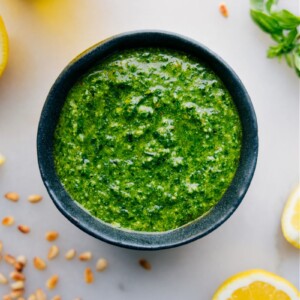
Pesto Recipe
Equipment
- Small pan
- Food scale see note 1
- Food processor or blender or nut grinder, see note 2
Ingredients
- 2-1/2 tablespoons pine nuts
- 4 ounces fresh basil see note 3
- 11 tablespoons olive oil or 3/4 cup minus 1 tablespoon
- 1/3 cup freshly grated Parmesan cheese see note 4
- 2 tablespoons lemon juice
- Salt and pepper
Instructions
- Preheat a small pan over medium-high heat (don’t add oil). Add pine nuts in an even layer and toast, stirring frequently, until lightly golden brown. Watch carefully! Once toasted, immediately transfer them to a bowl and let cool.
- Add all the ingredients except oil to a food processor or blender. Season to taste; I add a heaping 1/2 tsp salt and 1/4 tsp pepper. Pulse until ingredients are finely chopped. Scrape edges with a spatula as needed.
- While pulsing, gradually add the oil. Continue to pulse until pesto is smooth (or to your desired consistency). If you can’t quite get the pesto as smooth as you’d like, consider transferring it to a nut grinder and further processing it (see note 2) or keep stirring/scraping the edges and continue to pulse in the food processor/blender.
- Taste and adjust, adding a touch more salt if it tastes bitter, more lemon juice for a brighter flavor, or more cheese for a creamier texture. Remember, it’s a very concentrated flavor, so it mellows out when used in a dish! It’s also supposed to be thick, but you can further thin it with more oil if desired.
- Read through the blog post for loads of ideas how to use pesto. My favorite way is to make pesto pasta or to spread on avocado toast, sandwiches, or wraps.
Recipe Notes
Nutrition
Nutrition information is automatically calculated, so should only be used as an approximation.
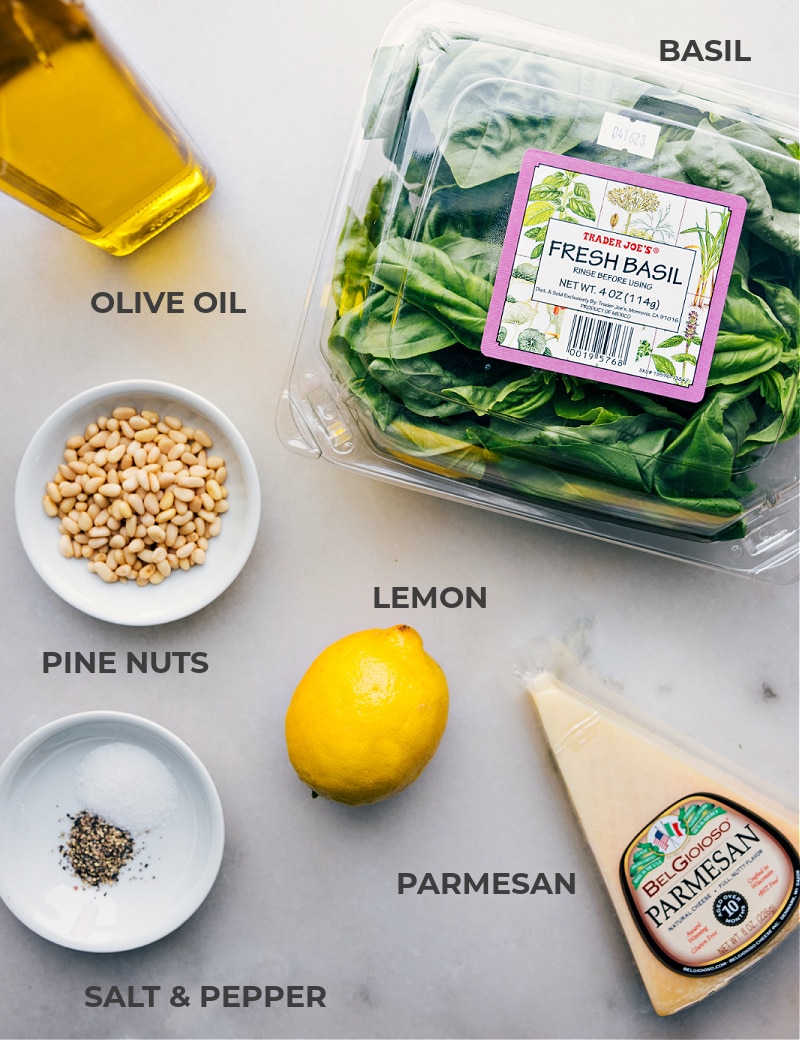
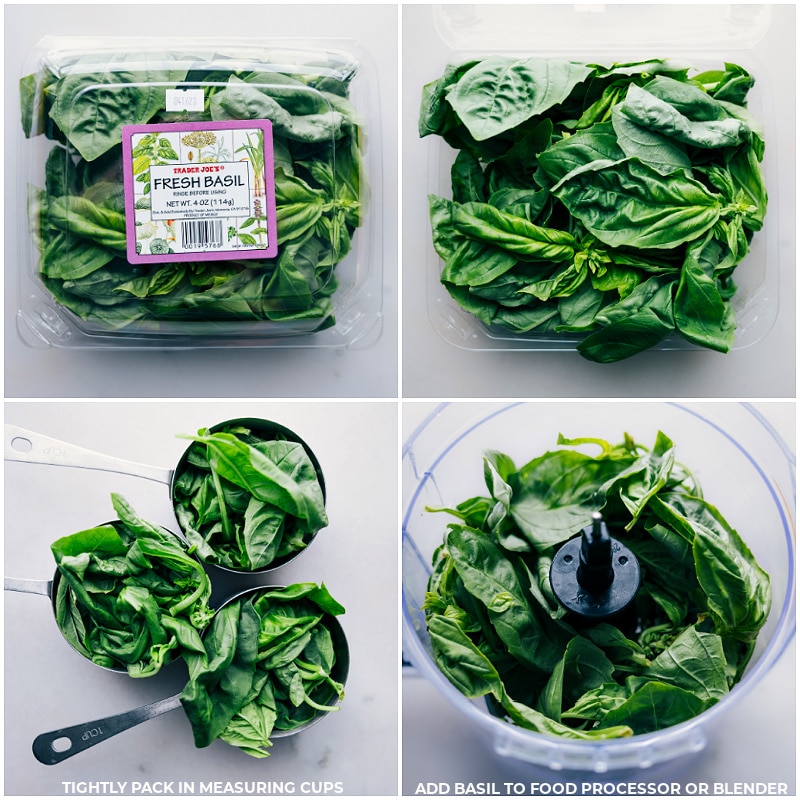
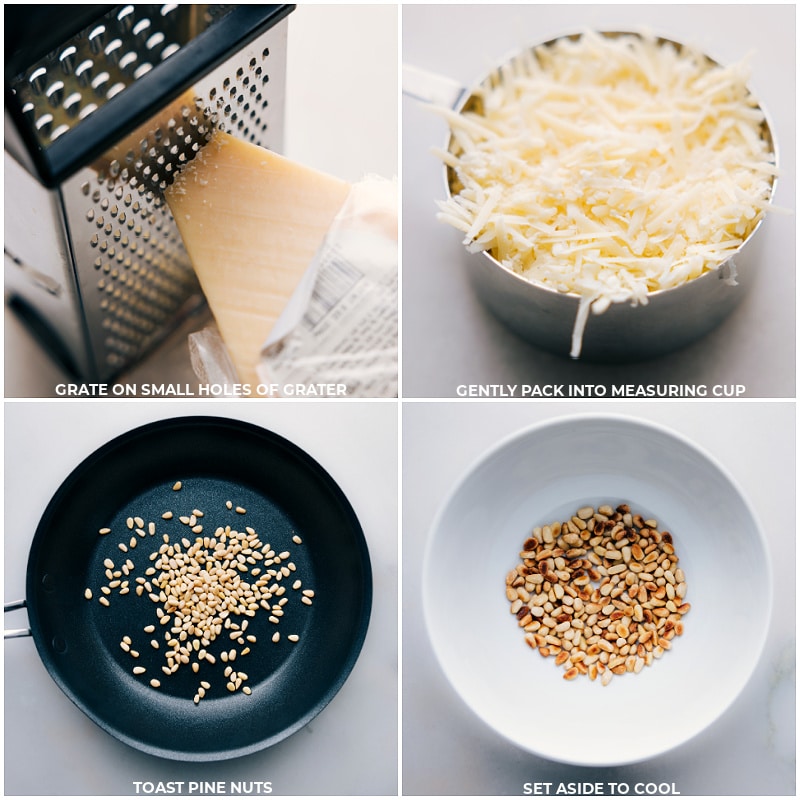
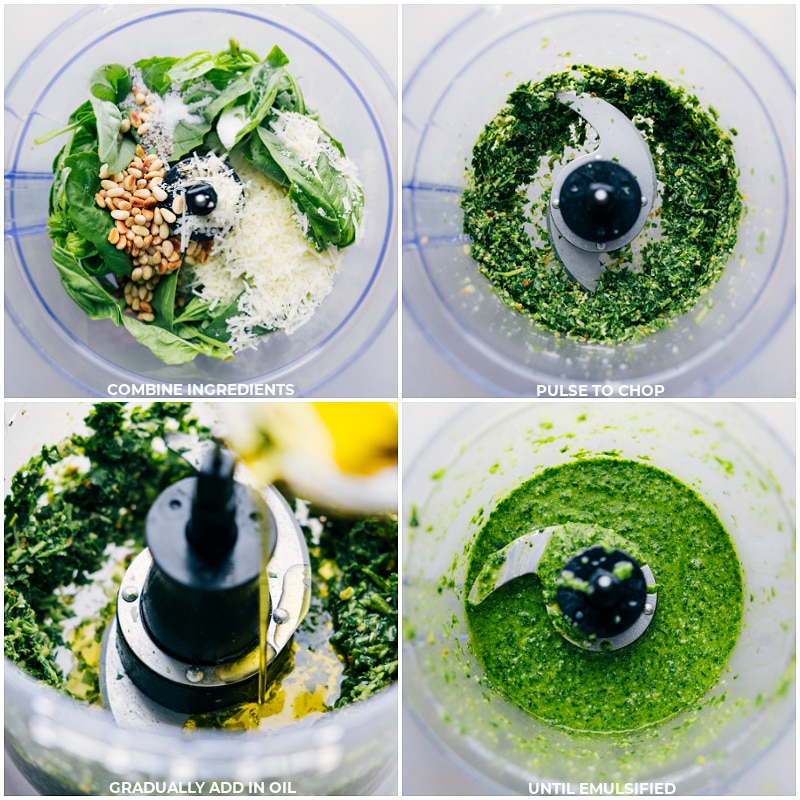
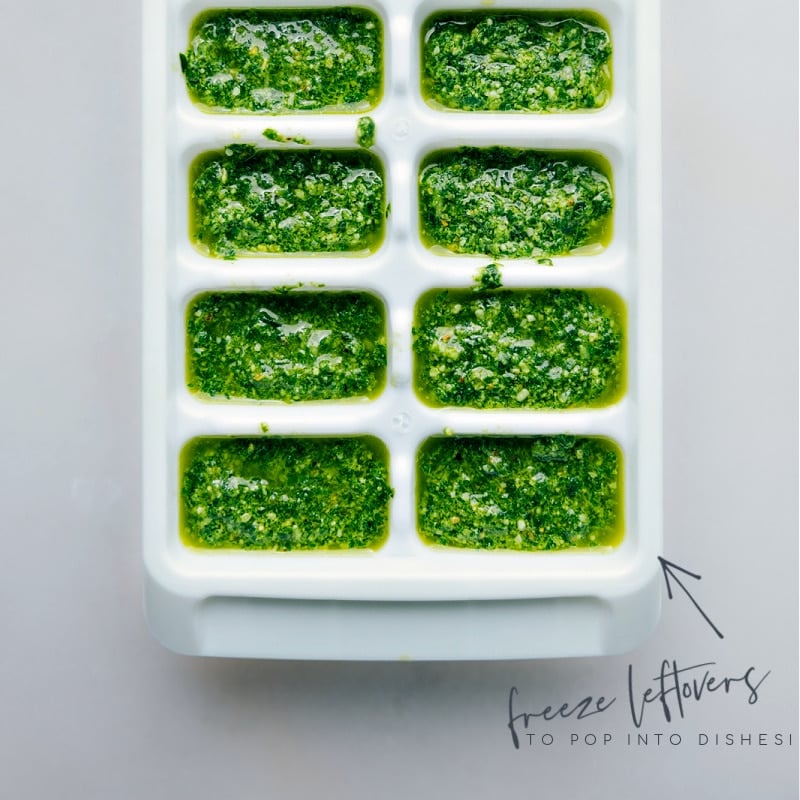
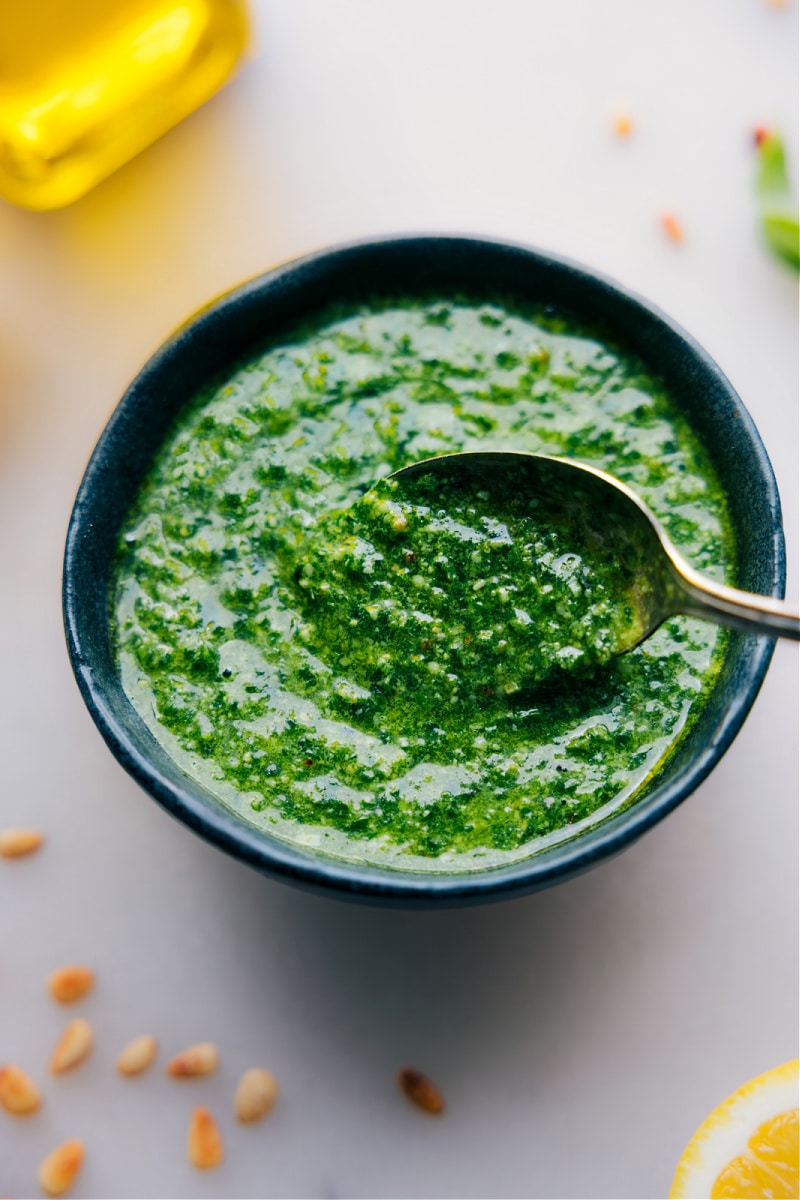


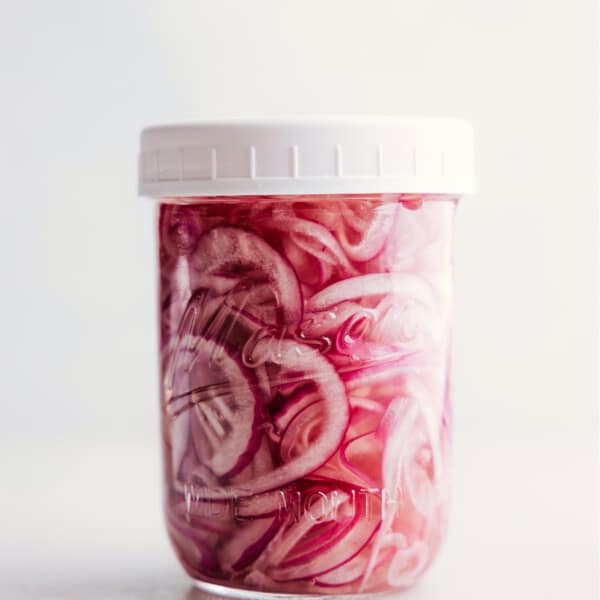
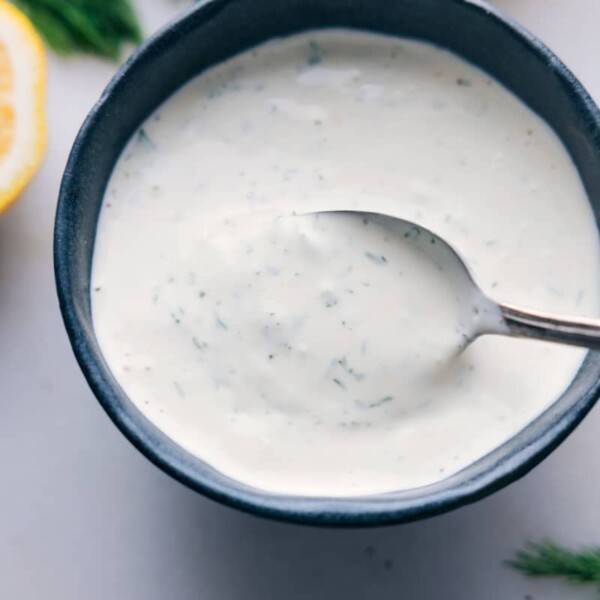
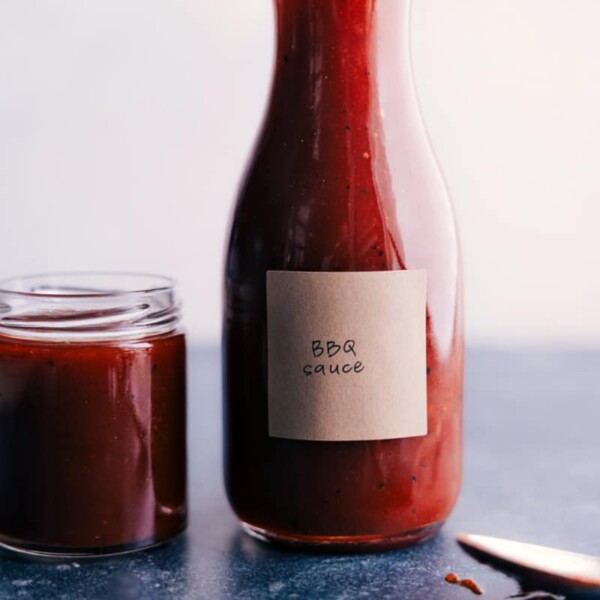
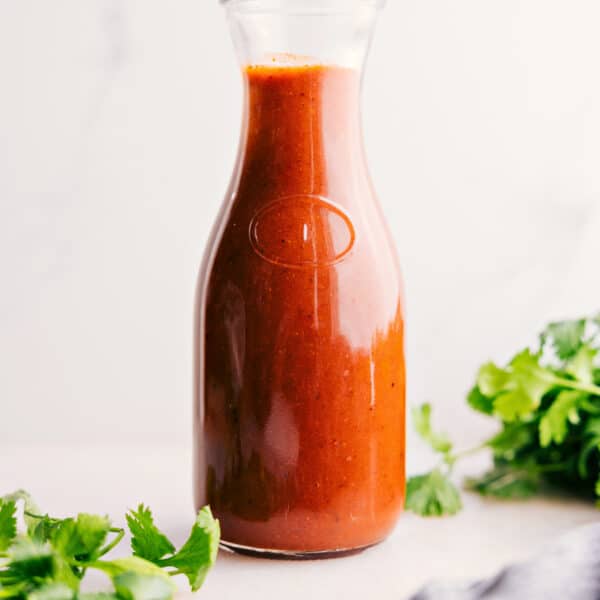









No garlic? It’s not Pesto without garlic
No garlic 🙂 But feel free to add some in if you’d like 🙂
Cant wait to make this soon for me can i use vegan parmesan cheese i love pesto soooooooooooooooo much perfect for with snacks love your recipes as always brightens up my day everyday after work
Delish! I’m so excited for you to try! 🙂